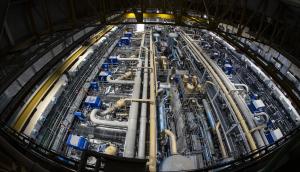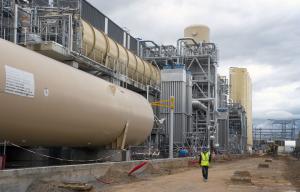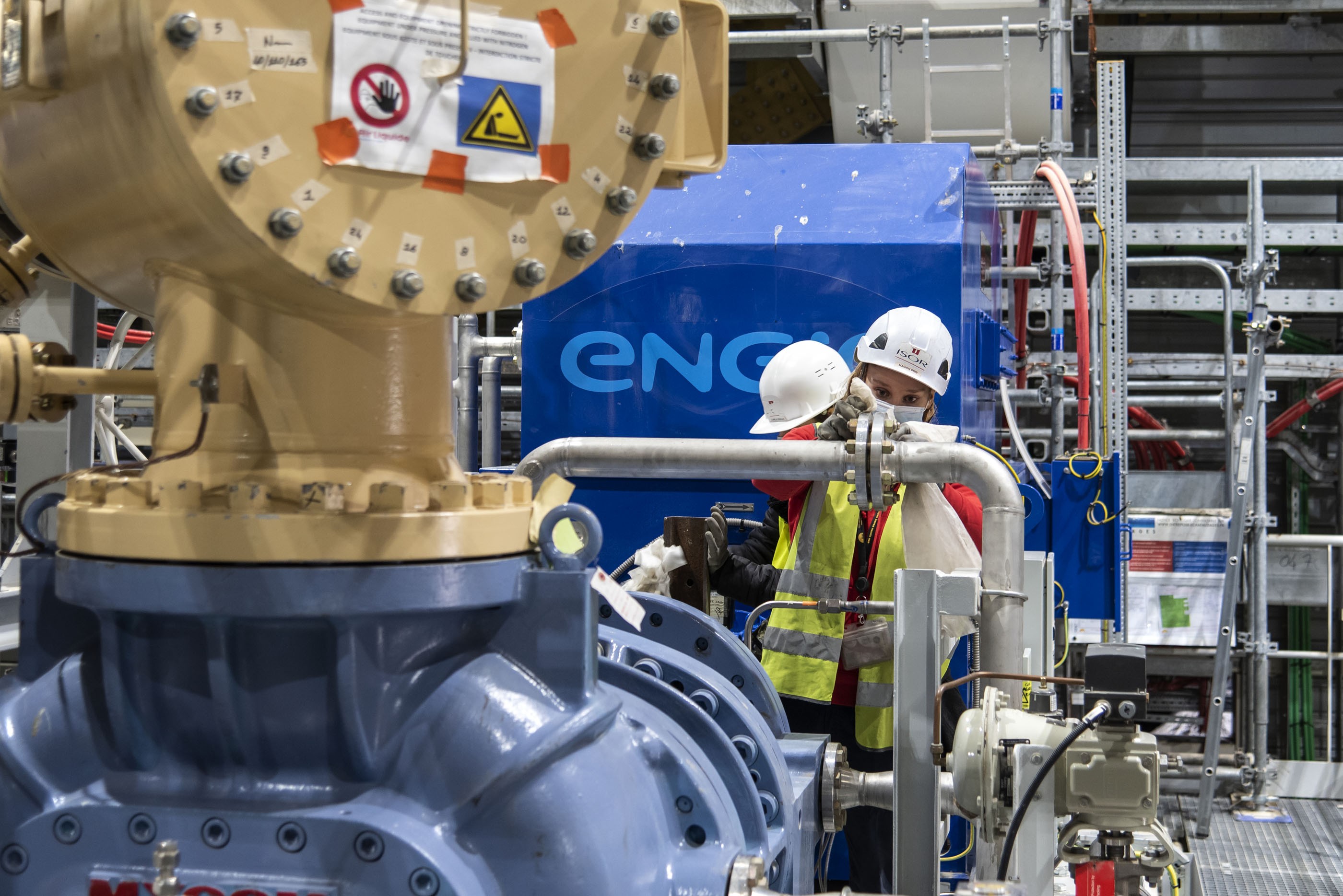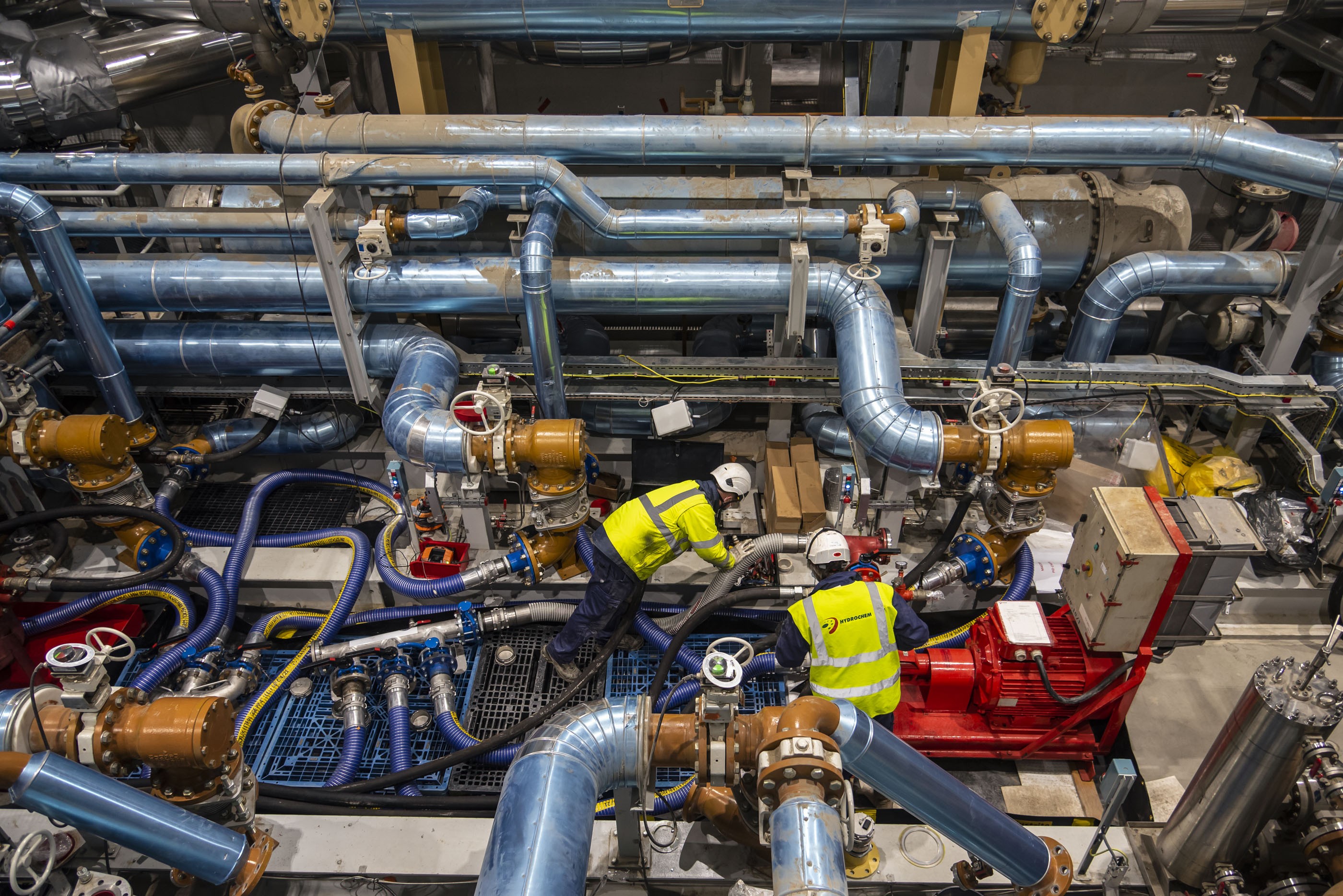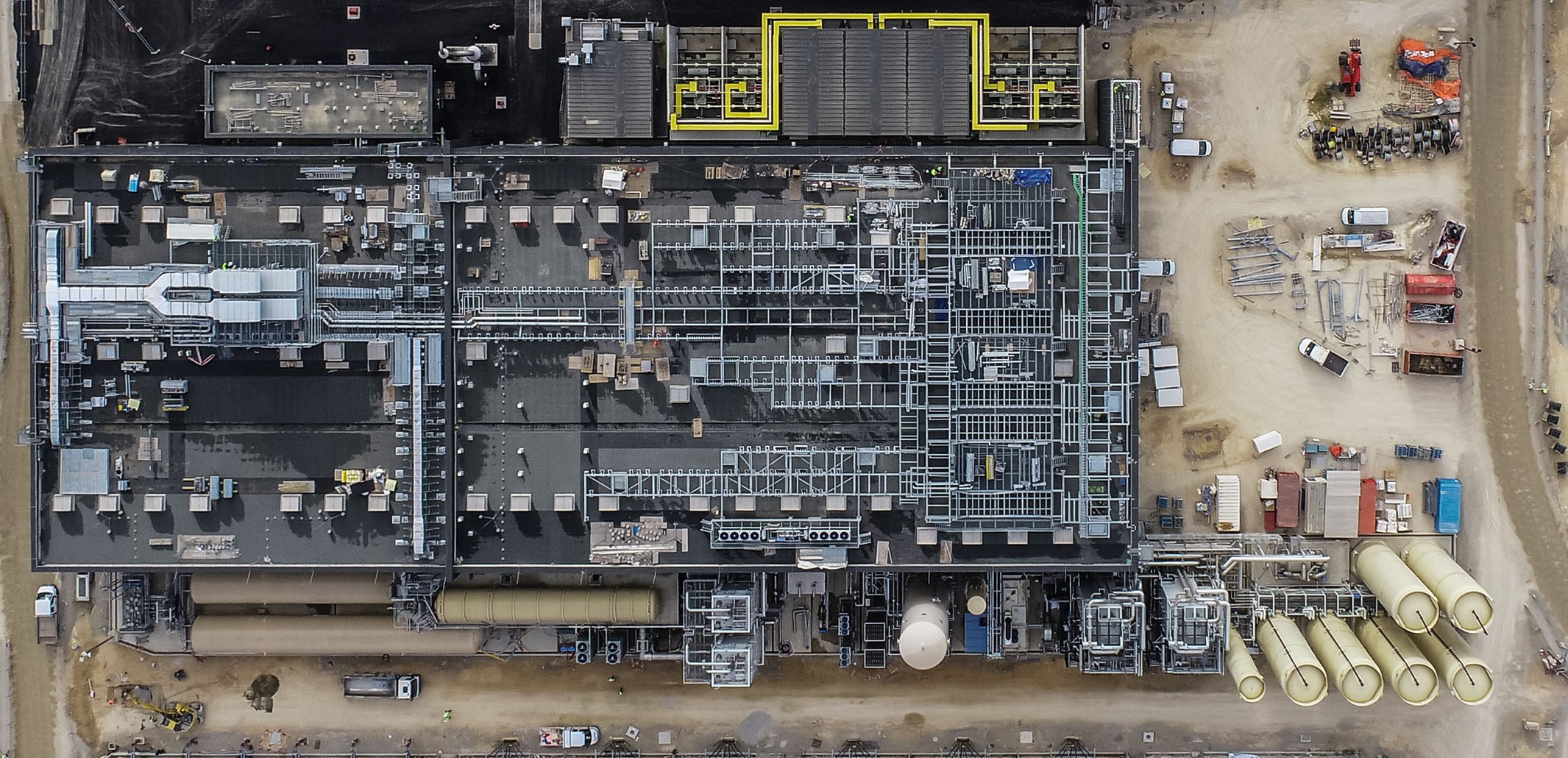First steps toward commissioning
Every week since the beginning of November, a tube trailer filled with approximately 4,600 cubic metres (750 kg) of compressed gaseous helium delivers its load to the ITER cryoplant. At a later stage, the deliveries will become more massive, as helium is delivered in liquid form in 25,000-cubic-metre (4-tonne) cryogenic containers. Progressively, the helium inventory in the cryoplant will reach the volume required to accommodate the different "clients" inside the tokamak: the lion's share for the superconducting magnets and the cryogenic pumping system, a smaller percentage for the cryostat shielding.
Like blood in a living organism, helium is at the core of cryoplant operation and performance. "The helium we receive from the tube trailer is extremely pure—no more than 2 ppm (parts per million) of non-helium molecules. In our processes we must remain below 10 ppm, which means that we must create a vacuum in all our tanks and piping before filling them—what we call the 'helium inerting' process."
The final commissioning sequence of the cryoplant is heavily dependent on the availability of other systems and installations. Compressors, turbines and electrical motors are powerful machines that require considerable cooling power that will only become available when the ITER heat rejection system is fully operational. "Fortunately, a large part of the pre-commissioning can be done without the availability of cooling water," smiles Grillot.
Operational acceptance testing will begin in the first months of 2022. "If everything goes well, the cryoplant will be in marching order in 2024," says Grillot. For the head of the ITER Cryogenic System Section, the adventure will have lasted more than ten years—first as the engineer in charge of design and manufacturing at the French supplier Air Liquide, then at ITER since early 2016.
But as always, success will be the result of team work. In the case of the cryoplant, the Cryogenic Integrated Team brings together the three parties sharing responsibility for the procurement of the cryoplant—the ITER Organization, responsible for the liquid helium plant; Europe, in charge of the liquid nitrogen plant and auxiliary systems; and India, whose contractors are procuring the cryolines, the warm lines and cryodistribution components.

